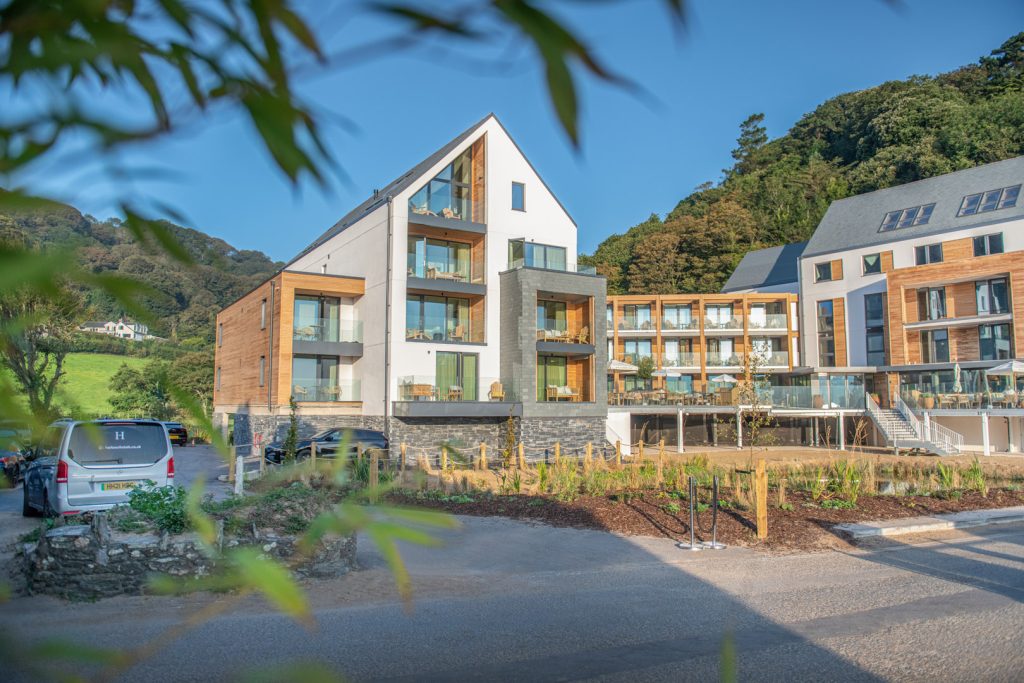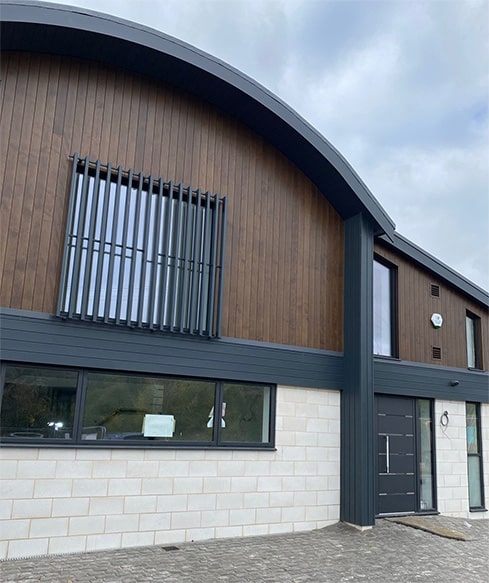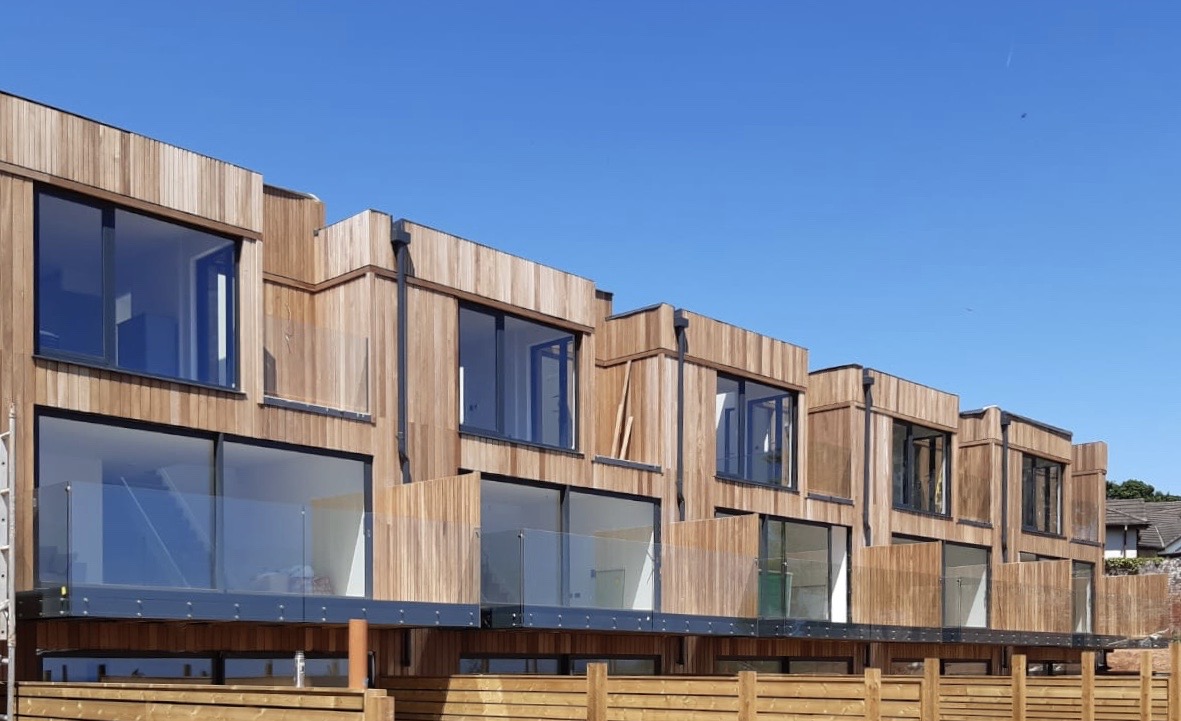How can Timber Cladding Improve a Building’s Performance & Durability
Timber cladding has made a resurgence in recent years. It has been a material of choice for many a residential extension and new build project, because of its versatility in various design styles and sustainable attributes. However, recent increases in popularity in the commercial construction sector are especially notable.
The expectation of the public has moved towards the use of natural and sustainable materials in the built environment as the awareness for climate change escalates, so it isn’t surprising that commercial clients and architects are opting for wood, both in regard to new builds and in existing spaces.
In this article, we at NORclad will explore the many benefits timber cladding possesses in regards to building’s aesthetics, performance and durability.

Five Key Advantages of Timber Cladding
- Sustainability
Sustainability stands to be timber cladding’s most differentiating quality. Wood comes directly from forests which are often sustainably maintained by replanting. Many suppliers these days will also provide evidence of the source of the materials. At the end of the timber’s life, timber cladding panels can be re-purposed or recycled. So, you can rest assured that you are contributing to a greener world.
- Aesthetic appeal
Wood simply looks great. Natural, versatile and welcoming, the number of options and combinations are practically endless once you consider type, enhancement and finish. Architects and designers have found ever more innovative ways of applying timber cladding to create truly stunning effects.
Take a look at some of NORclad’s case studies to get a better understanding. >
- Durability and longevity
Timber cladding is highly durable and is known to last for years. From naturally tougher tree species to the advent of modification, timber cladding is durable against the elements, insects and rot. It’s not unusual to get 30-60 years out of them and they can be easily replaced or repaired, especially if looked after.
- Insulation friendly
Another important green credential. They have natural insulating qualities and are a particularly good fit for application with a decent insulation system. They also reduce the need for less green forms of insulation and keep up good thermal efficiency and soundproofing.
The blanket-effect of timber cladding, though not to be misconstrued as external insulation, lends itself to homes in areas exposed to high winds and extreme temperatures. Hence timber cladding is a popular choice in Scotland and Scandinavian countries to help protect the building’s external walls.
- Cost
By the square metre, timber often comes out the least expensive both as a material and for the installation. Considering its cheaper maintenance costs, timber cladding is often one of the best lifetime cost-efficient options available.
What are the Exterior Timber Cladding Options?
Whether included in the architectural design of a new build or retrofitted onto older buildings, exterior cladding adds aesthetic appeal, as well as thermal insulation. However, there is a range of different types of exterior timber cladding options, so which do you pick? Our guide helps you make an informed decision.
If you are looking to clad a building in timber, there are four main options:
- Softwood Cladding
Some softwoods aren’t suitable for exterior use, however, there are a few exceptions; Canadian Western Red Cedar, Siberian Larch and Douglas Fir. These timbers contain natural oils or resins which increase moisture resistance and durability. Whilst all wood is hygroscopic, meaning it shrinks or expands with fluctuations in humidity and moisture. Another option is a timber that has been modified in some way, either through Thermal modification, such as Thermowood. Or, a preservative treatment such as NORclad Lite, or NORclad Brunnea.
- Hardwood Cladding
Oak has long been used in the construction of many long-standing buildings. It was once one of the most readily available building materials and has a reputation for being strong, durable and of premium quality. As a slow-growing tree, the oak is dense and impermeable, movement needs to be considered when working with Hardwood timbers for external cladding.
Despite its natural properties, additional finish applications will enhance the longevity of hardwood and reduce the need for maintenance.

Environmental Benefits of Timber Cladding
As aforementioned, when using timber from sustainably managed forests, you are choosing one of the most environmentally friendly materials out there. Not only does sustainable timber have little negative impact on the planet, but it can actually have a positive one.
The environmental advantages of timber include:
- It is a renewable material, so the Earth will never be depleted of it (as long as we harvest sustainably)
- It can be independently certified to ensure that it is sustainable.
- It requires less energy to produce than other materials, giving it a low carbon footprint.
- Growing trees for timber aids in the removal of CO2 from the atmosphere.
- Sustainable forests promote the conservation of trees, wildlife and plants and help local communities.
- It has the potential for recycling or reuse.
Timber is widely known as a beautiful building material. Natural, rustic, contemporary and colourful, its aesthetic attributes are varied and can be tailored to suit your design needs.
Get in contact today with one of our friendly and professional members of staff to find out more about the benefits of timber cladding.
Alternatively, download our company brochure and request a quote to start the process today.
Read More: The Ultimate Guide to Sustainable Timber >



















